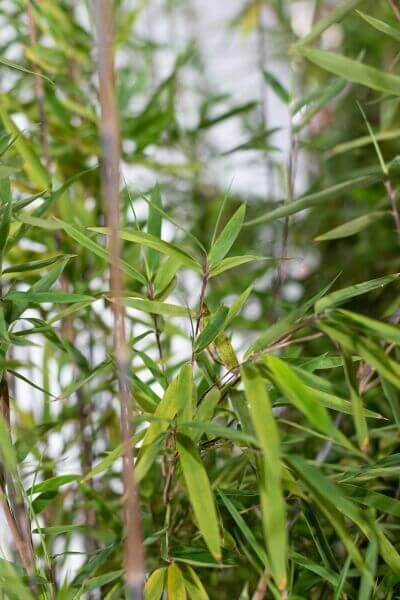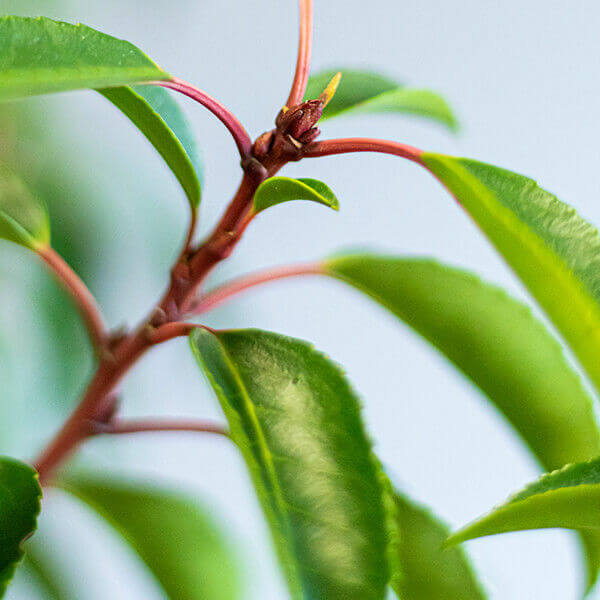Hedge Plants For Recreational Areas
Hedge Plants For Recreational Areas
Blog Article
Hedge Plants For Living Walls
Enhance your garden's allure with lavish hedge ranges such as Yew (Taxus), Thuja, Laurel, Photinia, and Bamboo, celebrated for their structural stability and environmental advantages.
Yew and Thuja offer evergreen coverage and winter strength, while Laurel provides rapid development and broad, aromatic leaves.
Photinia adds seasonal beauty with its vibrant red foliage, and Bamboo provides a low-maintenance, serene ambiance.
These hedges enhance air quality, decrease sound, and create tranquil, private areas.
Proper planting, spacing, and upkeep make sure vigorous growth and eco-friendly harmony.
Explore how these lavish varieties can elevate your garden's charm and wellness.
Key Takeaways
Change Your Garden With Lush Hedge Ranges
- Select Yew for its thick, evergreen growth and exceptional longevity.
- Go with Laurel for its fast growth and broad leaves, guaranteeing fast personal privacy.
- Pick Photinia for its vibrant seasonal foliage, which turns a striking dark red.
- Use Bamboo for a low-maintenance, winter-hardy hedge with visual appeal.
- Area plants 2-3 per meter and prune frequently for optimum growth and health.
Popular Hedge Plants
When changing a garden with lavish hedge varieties, it's important to consider popular hedge plants such as Yew, Thuja, Laurel, and Photinia due to their distinct qualities and advantages.
Yew (Taxus) is highly esteemed for its longevity and dense, green growth, making it a prime choice for enduring landscapes.
Thuja is noted for its evergreen foliage and robust winter season strength.
Photinia adds seasonal vibrancy with red leaves that darken gradually, producing vibrant visual appeal.
Laurel provides fast growth and fragrant, broad leaves, ideal for quick personal privacy.
Additionally, Bamboo is an outstanding option for atmosphere, providing a low-maintenance, winter-hardy choice that enhances the garden's aesthetic with its elegant, swaying walking canes.
These choices accommodate a variety of horticultural needs and choices.
Advantages of Garden Hedges
Garden hedges provide a wide variety of benefits, making them a valuable addition to any landscape. These natural barriers are cost-effective to carry out and offer considerable wind defense, improving air blood circulation and adding to noise decrease. The thick foliage of hedges like Thuja and Beech ensures personal privacy by obstructing exposure, producing a peaceful and remote environment.
Hedges also play an essential function in microclimate policy, supplying a steady environment that promotes plant growth and decreases temperature level changes. Their detailed leaf structures filter toxins, enhancing air quality and contributing to a much healthier garden ecosystem.
Furthermore, hedges master noise decrease, absorbing and deflecting acoustic waves to lower ambient noise levels. This dual performance of providing both acoustic and visual personal privacy improves the total serenity and visual appeal of any garden.
Planting and Maintenance Tips
For a successful hedge, precise preparation of the planting area is vital. Make sure the soil has proper pH and drainage to support strong root development.
Area the plants appropriately for the chosen types. Water the hedge frequently during its initial development stage, changing as needed with seasonal modifications.
Carry out a systematic bug control and disease avoidance technique, utilizing organic or chemical treatments when essential. Frequently check for aphids, termites, and fungal infections.
Apply mulch to maintain moisture and suppress weeds. Seasonal pruning promotes dense development and air flow, necessary for plant health.
Following these standards will assist you cultivate a lively, well-kept hedge that improves the beauty of your garden.
Spacing and Trimming Guidelines
Spacing and Trimming Standards
Correct spacing and cutting are important for cultivating healthy, visually appealing hedges. Adequate spacing ensures each plant gets enough nutrients, light, and air flow.
Follow these standards for ideal hedge maintenance:
- Spacing: Position hedge plants 2-3 plants per meter to motivate robust development.
- Pruning Methods: Routine pruning is vital for preserving desired hedge height and shape. Trim brand-new growth in summer and cut down older wood during winter season.
- Seasonal Care: Adjust trimming approaches and schedules according to seasonal requirements to ensure plant health.
- Hedge Height: Frequently screen and cut to preserve the desired hedge height and accomplish uniform visual appeals.
Sticking to these actions will ensure your hedge grows, enhancing both the appeal and performance of your garden.
Picking the Right Hedge
Selecting the Right Hedge
Selecting the proper hedge involves assessing factors such as mature height, foliage density, and environmental strength. Successful hedge plant selection needs understanding each types' development characteristics and site-specific versatility.
For example, Yew (Taxus) provides exceptional longevity and dense development, while Thuja is significant for its winter season resilience. In addition, considering maintenance requirements is essential; fast-growing types like Laurel or Privet need routine cutting, whereas low-maintenance options like Bamboo or Ivy might be more suitable for those looking for minimal maintenance.
Environmental elements such as soil type, light availability, and moisture conditions must likewise direct the choice procedure. This careful approach guarantees the chosen hedges will prosper, providing both visual and practical advantages to the garden landscape.
Shipment and Planting Guidance
To guarantee your hedge plants grow, they must be provided by specialized couriers and planted quickly upon arrival.
Follow these vital actions for effective planting:
- Soil Preparation: Enrich the soil with natural matter to improve drain and nutrient material.
- Planting Depth: Develop a trench twice the width and equal to the depth of the root ball.
- Watering Techniques: Water completely after planting, keeping the soil consistently moist however not filled.
- Mulching: Apply a layer of mulch to retain wetness and suppress weeds.
Customer Assistance and Service
Provided the crucial function of timely help in horticultural pursuits, our client support group is offered six days a week through telephone, e-mail, and social media to use expert advice and quickly address any issues. Their dedication to fast response times guarantees consumer fulfillment by dealing with questions related to plant health, optimum planting methods, and upkeep schedules.

Telephone
Within 2 days
This comprehensive support system, enhanced by a stellar 9.3/ 10 client score, highlights our commitment to boosting the gardening experience for every customer.
Regularly Asked Concerns
The Length Of Time Does It Consider Hedge Plants to Develop?
Hedge plants generally require one to three years to end up being totally developed, with the specific duration varying by species and growing conditions.
Efficient care throughout this vital duration is necessary for robust development. Constant watering, watchful weed control, and suitable fertilizer application are pivotal in promoting strong root development.
For instance, fast-growing types like Laurel might establish faster, while slower-growing varieties such as Yew may take longer. Thorough upkeep accelerates the establishment process, leading to thick and healthy hedges.
What Are the very best Hedge Plants for Privacy?
The concern of the very best hedge plants for personal privacy involves assessing evergreen and deciduous alternatives.
Evergreen hedges like Thuja, Laurel, and Cypress offer year-round protection, making sure continuous privacy.
On the other hand, deciduous hedges such as Beech use seasonal personal privacy, shedding leaves in colder months.
Key maintenance ideas for personal privacy hedges consist of regular trimming, fertilizing in spring, and proper spacing-- generally 2 to 3 plants per meter.
Furthermore, constant watering and thorough weed elimination are vital for promoting healthy, thick development.
Can Hedge Plants Attract Wildlife to My Garden?
Yes, hedge plants can draw in wildlife to your garden by supplying Browse around this site essential advantages like shelter, food, and nesting websites, therefore boosting regional biodiversity. For example, yew, holly, and laurel are exceptional for bring in birds, while ivy supports a range of bugs.
Nevertheless, it is very important to keep in mind that there are some downsides, such as increased upkeep to manage pests and routine maintenance. Carefully selecting and keeping hedge ranges can help balance these advantages and disadvantages, eventually fostering a vibrant and sustainable community in your garden.
Exist Any Blooming Hedge Plants Available?
Yes, there are flowering hedge plants available that can boost the charm of your garden.
For instance, Elaeagnus, also called Olive Willow, produces aromatic white flowers in the fall, adding a touch of elegance.
Photinia, another popular option, showcases vibrant red leaves that mature into an abundant green, producing a vibrant visual impact throughout the seasons.
To make sure these plants flourish, it's important to practice correct pruning techniques and seasonal upkeep, such as cutting new development in the summer and cutting down in the winter season.
These steps will assist maintain the health and aesthetic appeal of your blooming hedges.
How Do I Avoid Pests in My Hedge Plants?
To prevent bugs in hedge plants, employ natural insect control approaches and keep proper hedge care. Introduce helpful insects like ladybugs, which take advantage of damaging pests, to create a balanced community.
Frequently inspect your hedges for signs of invasion and promptly remove any affected parts to prevent the spread. Guarantee the health of your hedges by using well balanced fertilizers and supplying adequate water.
Make use of mulching to retain soil moisture and proper spacing to decrease plant stress and promote robust growth. These practices collectively help in reducing insect problems and preserving a healthy hedge.
Conclusion
In essence, selecting the right hedge varieties such as Yew, Thuja, and Laurel can transform any garden into a tranquil sanctuary. These plants supply year-round plant, improve aesthetic appeal, and offer practical advantages like sound reduction and wind protection.
Proper planting strategies, precise spacing, consistent watering, and seasonal trimming are vital for optimum development.
Trusted shipment services and professional customer assistance make sure a seamless experience from purchase to planting, making it simpler than ever to raise your outdoor space.
Garden hedges offer a plethora of benefits, making them a valuable addition to any landscape. These natural barriers are economical to carry out and provide significant wind protection, improving air flow and contributing to sound decrease. The dense foliage of hedges like Thuja and Beech guarantees privacy by obstructing visibility, creating a secluded and tranquil environment.

Pruning Methods: Routine pruning is vital for preserving desired hedge height and shape. Cut brand-new growth in summertime and cut back older wood during winter season.
Report this page